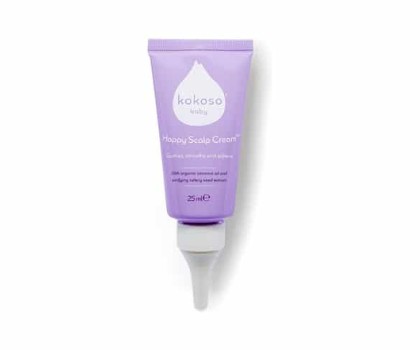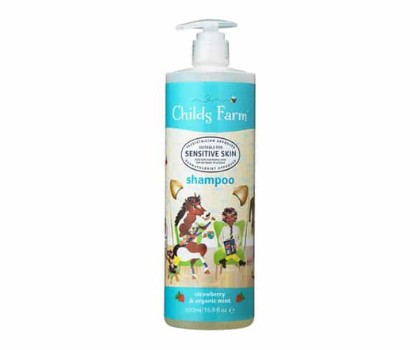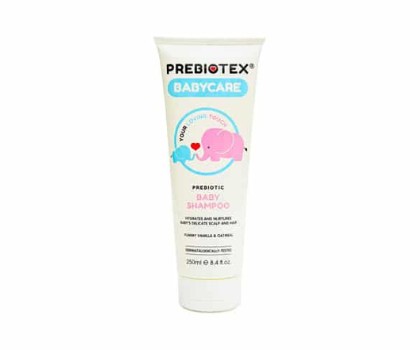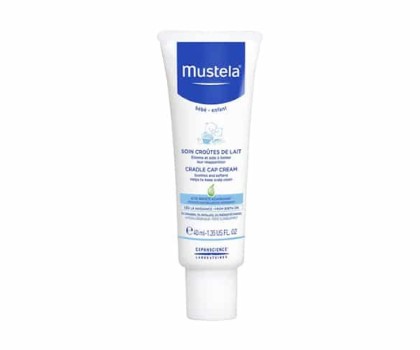Table of Contents
Comparison Table
Product
Title
Features
Price
Our choice

Babe Paediatric Cradle Cap Shampoo
- Free from all ‘Nasties!’
- Easy open lid
- Improves cradle cap from the first use
Premium Pick

Kokoso Baby Wash and Shampoo
- Little goes a long way
- Easy Application Nozzle
- 98% Natural Ingredients
Best Value

Childs Farm Shampoo
- Paediatrician and Dermatologist tested and approved
- Suitable for sensitive and eczema-prone skin
- Suitable for Newborns

Our Choice
Babe Paediatric Cradle Cap Shampoo
Buy this if you are looking for the best unscented shampoo for cradle cap.
- Free from all ‘Nasties!’
- Easy open lid
- Improves cradle cap from the first use
Pros
- Free from all ‘Nasties!’
- Easy open lid
- Improves cradle cap from the first use
Cons
- Small Bottle Size
Check out the last deal for this product

Premium Pick
Kokoso Baby Wash and Shampoo
Buy this if you are looking for the best natural shampoo for cradle cap.
- Little goes a long way
- Easy Application Nozzle
- 98% Natural Ingredients
Pros
- Little goes a long way
- Easy Application Nozzle
- 98% Natural Ingredients
Cons
- Very Small Bottle for the Price
Check out the last deal for this product

Best Value
Childs Farm Shampoo
Buy this if you are looking for the best popular brand shampoo for cradle cap.
- Paediatrician and Dermatologist tested and approved
- Suitable for sensitive and eczema-prone skin
- Suitable for Newborns
Pros
- Paediatrician and Dermatologist tested and approved
- Suitable for sensitive and eczema-prone skin
- Suitable for Newborns
Cons
- Not tear-free solution
Check out the last deal for this product

Prebiotex Baby Shampoo
Buy this if you are looking for the best vegan approved shampoo for cradle cap.
- Over 98% natural
- Free from nasties
- No artificial Colours
Pros
- Over 98% natural
- Free from nasties
- No artificial Colours
Cons
- Not tear-free solution
Check out the last deal for this product

Mustela Cradle Cap Cream
Buy this if you are looking for the best hypoallergenic shampoo for cradle cap.
- 95% natural ingredients
- Hypoallergenic
- Untested
Pros
- 95% natural ingredients
- Hypoallergenic
- Untested
Cons
- Takes a few rubs to lather up
Check out the last deal for this product
Best Nappy Rash Creams buying guide and FAQ
What is Cradle Cap?
Cradle cap, otherwise known as seborrhoeic dermatitis, is a harmless but noticeable condition that appears as greasy, scaly patches on your baby’s head. It is usually yellow or white but can also show as deep, red bumps, similar to infant acne.
While there is no known cause of cradle cap, it has been connected to the excess production of skin oil (sebum). It is suspected the skin oil reacts to a type of yeast called Malassezia. Mild baby shampoos as well as massaging the scalp with a soft brush help to remove some of the excess oil build up.
After a period of time the scales will become flaky and start to fall off naturally or with a light brush, similar to dandruff. But I can’t stress this enough- do not be tempted to pick the skin off. Look for alternative remedies like cradle cap shampoos to help instead.
How to Spot Cradle Cap?
You will find cradle cap on your baby’s scalp, although it can appear on other parts of the body too. The patches of scaly skin can also appear around the armpits and nappy area, as well as on the eyebrows, nose, back of the neck, ears and eyelids. Most commonly, however, it appears on the scalp.
As mentioned, cradle cap can appear as deep red bumps, which are similar to infant acne but smaller, or it can be yellow or white greasy scales of skin. Sometimes, an oily odour can be detected with cradle cap, but this is not always the case. There are no other known symptoms associated with cradle cap so don’t worry if you do see signs of cradle cap on your baby’s scalp or skin; it is completely normal for a newborn to have it and there are ways of managing and treating it.
Can Cradle Cap Hurt my Baby?
My little one had cradle cap and while it did not faze him whatsoever, it is just not very pleasant to look at. Your baby will not feel irritated or uncomfortable from the cradle cap, in fact they will most likely be oblivious to it.
Do not give into the temptation to pick or scratch at it. Picking at it can cause sore areas, bleeding and possibly infection. Your baby will certainly feel irritated by this, so I know I keep saying it but- resist the urge to pick! I understand it can look awful, but rest assured it will go eventually.
Follow my tips to shampoo and massage the area. My top five recommendations of shampoos for babies with cradle cap will help you find a solution to the affected area. However, if you notice that the condition doesn’t improve or gets worse, then please see your GP for advice.
How to Treat Cradle Cap?
The important thing (again) is to resist picking or scratching at the affected area. As mentioned above, this can be painful for your baby and even lead to infection.
Regularly wash your baby’s head with a mild baby shampoo. I found it helpful to follow this with a gentle massage of little one’s head with a soft brush; this helps to loosen the thick, oily, scales.
Although it doesn’t sound right to put oil onto the affected area, I recommend rubbing mild baby oil, vegetable oil, olive oil or cream into the cradle cap affected scalp to help soften the flakes. Leave it to settle into the area overnight, and then wash off the following morning using one of my recommended shampoos for cradle cap. It is vital that you ensure the oil is cleaned away thoroughly as we want to prevent further oil build up.
As cradle cap can be quite painful for babies, be sure to team bath time with an awesome bath toy from our 8 best bath toys guide.
Can Cradle Cap come Back?
Cradle cap is most likely to appear before baby reaches two months old, and goes by the time they reach six months, for some babies it can be up to twelve months. In between this time, it can come and go intermittently. Just ensure that when it does appear you use a mild baby shampoo to help tackle it safely.
Also, when the skin becomes flaky and is ready to come off itself, it will often fall out with bits of hair attached. Don’t worry about this as the hair will grow back.
My baby boy was born with a head full of long, dark hair. However, cradle cap caused a lot of it to quickly fall out and by the time he reached 3 months old he was almost bald. I was worried his thick hair wouldn’t come back- but it did! The cradle cap eventually stopped making an appearance too.
Is Cradle Cap Contagious?
To put this answer simply, no cradle cap is not contagious. Neither is it caused by bad hygiene or an allergy. You might observe other babies also have cradle cap at baby groups, but this is simply because it is a very common condition to occur in newborn babies.
A baby’s skin is completely new to the environment around them, having been protected by amniotic fluid for nine months, it is now discovering how to react and develop in an open place with many more environmental factors to take into consideration. Just like your baby’s immune system, sight, reflexes, etc are developing, so is your baby’s skin.
Eventually, your little one’s skin will adjust to his or her new climate and the cradle cap will go too. In the meantime, use my guide to find a mild baby shampoo to help your infant’s combat cradle cap.
Conclusion
Overall, out of all of the shampoos for cradle cap I have tried and tested, my recommended top five are the products I found to be the most effective for my baby’s scalp.
To make it even easier for you to decide, I have broken them down into categories of best soothing, best unscented, best easy application, best vegan-society approved and best popular cradle cap shampoo. You can effortlessly pick a product which is most suitable for you and your baby’s requirements.
Personally, I found a combination of products to be the most effective for my son. The Kokoso Baby Happy Scalp cream left overnight really helped to hydrate my sons scaly scalp and loosen up the flakes. I also found it convenient to carry anywhere with me and would simply dab a little on his scalp whenever I felt the tempting urge to pick.
As my son’s scalp had an oily odour with it, I found the Childs Farm Shampoo to be my favourite scented cradle cap shampoo. I gave his head a thorough massage with the shampoo to completely clear out the Kokoso Baby Happy Scalp cream. This left his little head smelling delicious while continuing to combat the cradle cap.
To finish, I used a little of Childs Farm Conditioner to leave his beautiful little baby hair feeling silky soft. Sometimes the popular brands are popular for a reason. I always follow my shampoo with a conditioner, so I make sure to do so with my baby. It is even more important with cradle cap to ensure the area is adequately moisturised.
Cradle cap really can be a pain, but with the right cleansing routine in place using an effective scale clearing shampoo it will make it much more manageable until your baby is cradle cap free. If you want to team a baby body wash with your cradle cap shampoo then check out this guide here.

